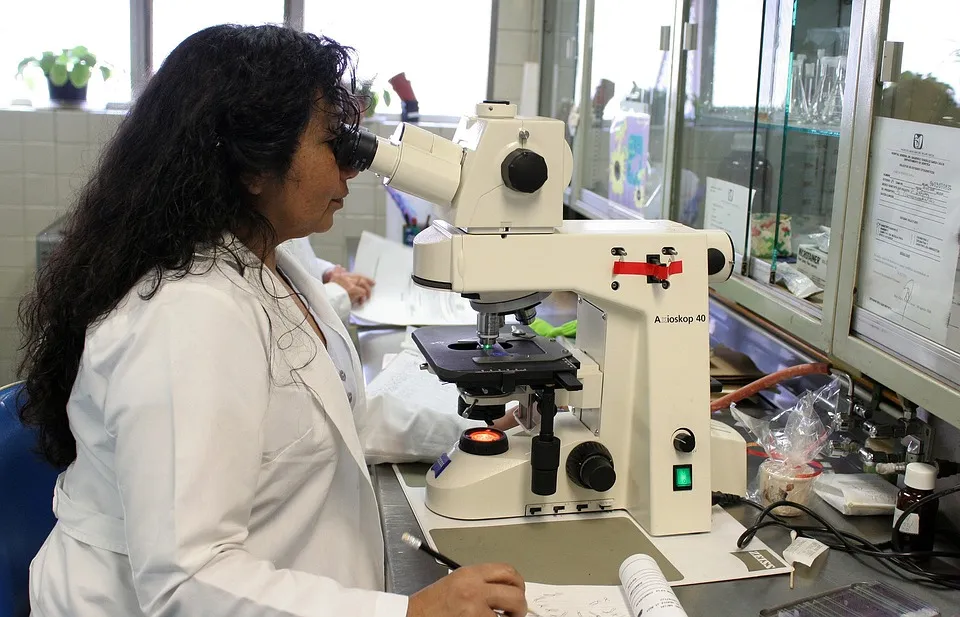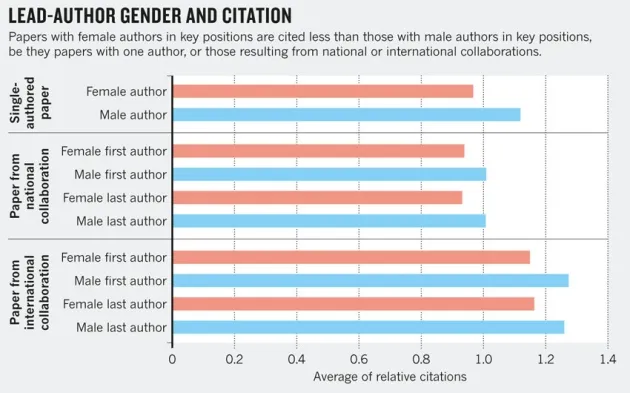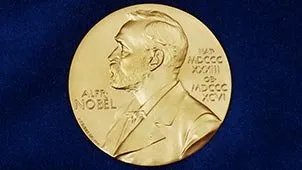
One of the important issues in STEM education (Science, Technology, Engineering, and Mathematics) is the issue of women or gender. Women's participation in the STEM discipline is considered to be lacking. The jobs in the STEM field are still controlled by men.
I have heard of my friend's complaint in Faculty of Engineering. Incidentally he majored in Mechanical Engineering. In the lecture room, there are only a few women, according to the range is 20% female and 80% male. More male students dominate almost all majors in the Faculty of Engineering. Apparently, almost all the Faculty of Engineering in Aceh is dominated by women. I do not have any accurate data, but that's the reality here.
Furthermore, the question arises in my mind. Is it true that women are not able to take part in the field of STEM? However, I found some surprising facts. And this short article is trying to answer my question.

Lack of Women on Science
Biological differences often make one party unfairly treated in a social space. Women with various aspects of nature are always positioned in the domestic space (second class). While men are usually more positioned in public space (first class). This kind of identification is in fact the practice of gender inequality, as if the woman who takes care of the household is assumed to be incapable of dealing with issues in the public sphere concerned with the interests of the people. In fact, it is not impossible that women also have the ability to actualize themselves in the public space as well as men.[1]
In the STEM employment sector, historically still dominated by men. The gap between men and women that occurred in the past still haunts women to work in the STEM sector. Many scholars and policymakers have noted that the fields of science, technology, engineering, and mathematics (STEM fields) have been predominantly male occupations, with historically low participation among women, from their origin in the Age of Enlightenment to the present time. STEM professions, like medicine, require higher education or training—especially in mathematics—in nearly all cases.[2]
Women remain underrepresented in the science and engineering workforce, although to a lesser degree than in the past, with the greatest disparities occurring in engineering, computer science, and the physical sciences.[3] Here are some facts that occurred in the U.S. Women make up half of the total U.S. college-educated workforce, but only 29% of the science and engineering workforce. Female scientists and engineers are concentrated in different occupations than are men, with relatively high shares of women in the social sciences (62%) and biological, agricultural, and environmental life sciences (48%) and relatively low shares in engineering (15%) and computer and mathematical sciences (25%).[3]
| Profession | Percentage |
|---|---|
| Chemist | 35.2% |
| Physicist | 11.1% |
| Environmental engineer | 33.8% |
| Chemical engineer | 22.7% |
| Civil, architectural, and sanitary engineer | 17.5% |
| Industrial engineer | 17.1% |
| Electrical or computer hardware engineer | 10.7% |
| Mechanical engineer | 7.9% |
Women chemists showed a rather large number compared to other fields. That is, there are 64.8% male chemists. However, female mechanical engineers showed very low numbers (7.9%). The data above is just a small example of how the lack of participation of women in the STEM fields. This phenomenon is not only happening in the United States which in fact is a developed country. In other countries also seen a similar phenomenon.

Lack of Women Researchers in STEM
Just 28% of researchers are women. According to UIS (Unesco Institute for Statistics) data, less than 30% of the world’s researchers are women. UIS data also show the extent to which these women work in the public, private or academic sectors, as well as their fields of research. But to truly reduce the gender gap, we must go beyond the hard numbers and identify the qualitative factors that deter women from pursuing careers in science, technology, engineering and mathematics (STEM).[4]
The data below shows the percentage of female researchers in some regions:
| Region | Percentage |
|---|---|
| World | 28.8% |
| Arab States | 39.9% |
| Central and Eastern Europe | 39.6% |
| Central Asia | 47.2% |
| East Asia and the Pacific | 22.9% |
| Latin America and the Caribbean | 44.7% |
| North America and Western Europe | 32.2% |
| South and West Asia | 19.0% |
| Sub-Saharan Africa | 30.4% |
Central Asia seems to have gained significant numbers. Only a few percent longer can equate male researchers. However, West and South Asia still have large gaps.
Globally, women account for fewer than 30% of fractionalized authorships, whereas men represent slightly more than 70%. Women are similarly underrepresented when it comes to first authorships. For every article with a female first author, there are nearly two (1.93) articles first-authored by men.[5]

The illustration above also shows that men are still on top in terms of scientific publications.

Women and the Nobel Prize (STEM)
At least 17 women who received the Nobel Prize in science. However, there was a woman who got two Nobel Prizes in a different field, Marie Curie. By looking at the list of Nobel Prize recipients, the participation of women in science can not be underestimated. It is also evident that women are also able to compete with men in science. Here are a few women Nobel Prize recipients[6]:
| Year | Laureate | Rationale |
|---|---|---|
| 1903 | Marie Curie | In recognition of the extraordinary services they have rendered by their joint researches on the radiation phenomena discovered by Professor Henri Becquere |
| 1963 | Maria Goeppert Mayer | For their discoveries concerning nuclear shell structure |
| Year | Laureate | Rationale |
|---|---|---|
| 1911 | Marie Curie | In recognition of her services to the advancement of chemistry by the discovery of the elements radium and polonium, by the isolation of radium and the study of the nature and compounds of this remarkable element |
| 1935 | Irene Joliot-Curie | In recognition of their synthesis of new radioactive elements |
| 1964 | Dorothy Crowfoot Hodgkin | For the determinations by X-ray techniques of the structures of important biochemical substances |
| 2009 | Ada E. Yonath | For studies of the structure and function of the ribosome |
| Year | Laureate | Rationale |
|---|---|---|
| 1947 | Gerty Theresa Cori | For their discovery of the course of the catalytic conversion of glycogen |
| 1977 | Rosalyn Yalow | For the development of radioimmunoassays of peptide hormones |
| 1983 | Barbara McClintock | For her discovery of mobile genetic elements |
| 1986 | Rita Levi-Montalcini | For their discoveries of growth factors |
| 1988 | Gertrude B. Elion | For their discoveries of important principles for drug treatment |
| 1995 | Christiane Nusslein-Volhard | For their discoveries concerning the genetic control of early embryonic development |
| 2004 | Linda B. Buck | For their discoveries of odorant receptors and the organization of the olfactory system |
| 2008 | Francoise Barre-Sinoussi | For their discovery of human immunodeficiency virus |
| 2009 | Elizabeth H. Blackburn | For the discovery of how chromosomes are protected by telomeres and the enzyme telomerase |
| 2009 | Carol W. Greider | For the discovery of how chromosomes are protected by telomeres and the enzyme telomerase |
| 2014 | May-Britt Moser | For their discoveries of cells that constitute a positioning system in the brain |
| 2015 | Youyou Tu | For her discoveries concerning a novel therapy against Malaria |
Women in SteemSTEM (Steemit Platform)
From October 22 to October 29 (see SteemSTEM Distilled 7), steemstem has curated 73 different authors who have written a total of 117 different articles. However, I have trouble identifying women Steemit users there. But clearly, the men still dominate SteemStem. I expect an increase in the participation of Steemit women users in SteemStem. Hopefully SteemStem can give priority curation to them.
Conclusion
All STEM fields are still dominated by men. But some facts show that the percentage of women almost touches the percentage of men in certain fields. It is possible in the next few years, women will be able to match male dominance. The issue of women in STEM has become the focus of policy makers. This issue must also consider the social gap between men and women in the public sphere. This social gap - unfortunately - still occurs in some countries, especially developing countries. For this reason, policy makers should also make regulations that do not discriminate against women in the public sphere.
References:
[1] https://masthoni.wordpress.com/2009/07/02/gender-dalam-sains-dan-teknologi/
[2] https://en.wikipedia.org/wiki/Women_in_STEM_fields
[3] https://ngcproject.org/statistics
[4] http://uis.unesco.org/en/topic/women-science
[5] http://www.nature.com/news/bibliometrics-global-gender-disparities-in-science-1.14321
[6] https://www.nobelprize.org/nobel_prizes/lists/women.html